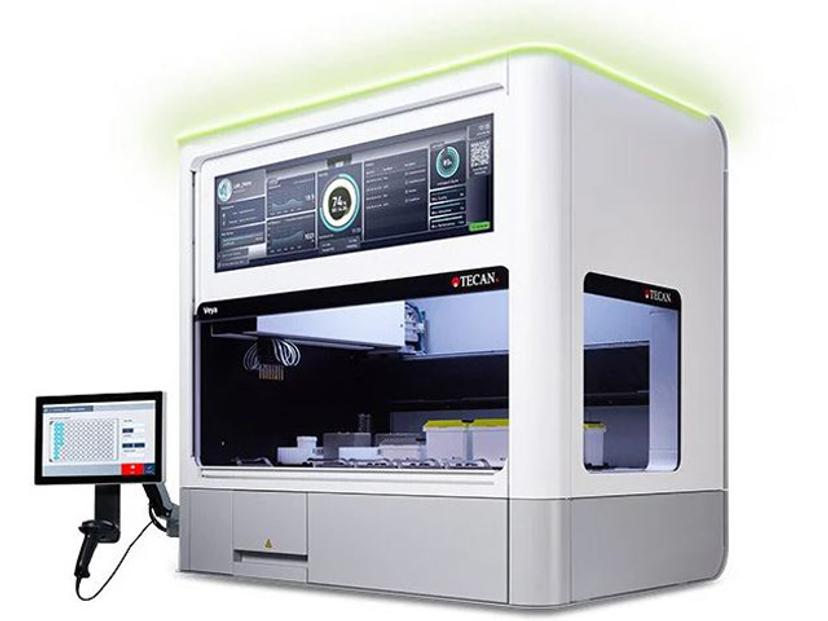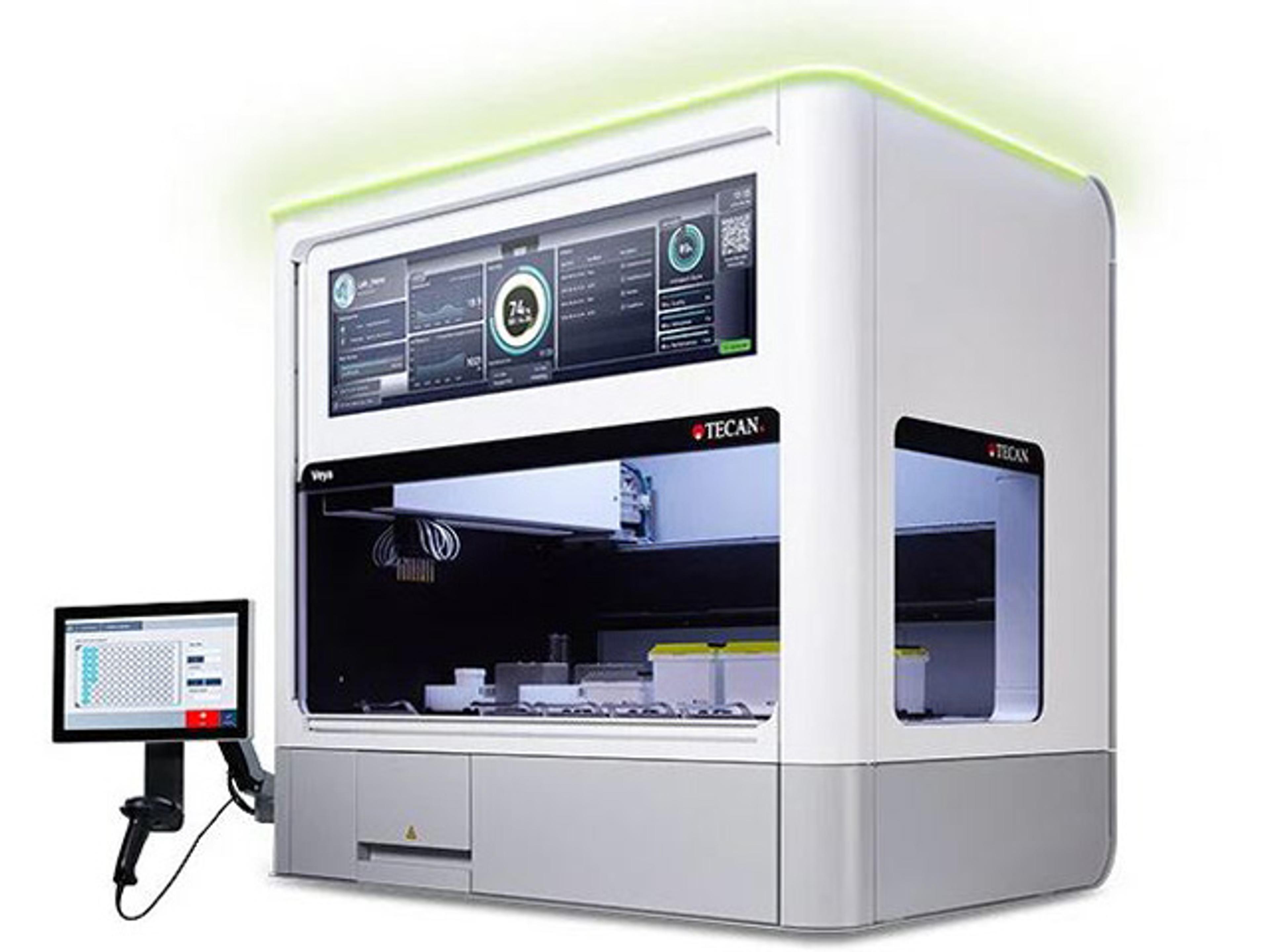Digital transformation maximizes lab automation impact
With smarter tools, AI-powered insights, and a focus on user experience, lab automation is becoming more accessible, flexible, and impactful than ever
22 Jul 2025

Hal Wehrenberg, Vice President of Digital Transformation at Tecan
As laboratories face growing pressure to do more with less, automation is no longer a luxury, it is essential. But the promise of automated liquid handling often collides with real-world barriers like complexity, cost, and rigid workflows. In the second part of our lab automation series, we explore how digital transformation is reshaping the landscape. Hal Wehrenberg, Vice President of Digital Transformation at Tecan, shares how smarter tools, AI integration, and a renewed focus on user experience are driving a new era of flexible, scalable automation.
Tecan places a strong emphasis on flexibility and scientific robustness, principles that inspired the creation of its Digital Innovation and Transformation Office in 2024, now co-led by Wehrenberg. “My role is to ensure that, as an organization, we stay aligned with the evolving needs of our customers,” Wehrenberg explains. “This includes adapting to how their approaches are shifting, whether it’s increasing throughput, improving reliability and quality, or responding to how AI is reshaping our products and our customers’ workflows. We’re also exploring how emerging software tools and techniques can drive meaningful innovation. Our focus remains on enhancing throughput, quality, ease of use, and operator success, while ultimately delivering a strong return on investment for our customers.”
At the heart of this transformation is a rethinking of how users interact with instruments, ensuring seamless digital integration for real-time responsiveness and productivity. “It sounds simple,” Wehrenberg remarks, “but it's amazing how many different elements of automation in the lab don't have this type of connectivity, even to your phone, for example. This isn’t the case with Tecan.’’
Tecan is at hand to help laboratories of all sizes scale their data management, utilizing their years of experience. “There are some big challenges for a lot of companies in terms of data management, from combining different datasets in new and interesting ways to training models and using AI, to create interesting interpretations of multiomic data,” Wehrenberg explains. “While at a small scale labs may stitch the data together from a couple of Excel sheets. We recognize that this isn’t going to scale, and it's not reproducible in the long run. Talking to a company like Tecan with our automation tools, and our experience in integrating in data systems, can help.”
Making automation accessible without sacrificing flexibility

Veya®, Tecan's new solution for effortless automation
Veya®, is at the forefront of this digital transformation. This automated liquid handling system is designed to deliver more focused, less complex workflows. It is set to redefine efficiency, accuracy and accessibility by embodying simplicity, through the use of cutting-edge digital tools, intuitive interfaces and AI-powered analytics – allowing scientists to focus on discovery.
“We wanted to make sure that we kept some simplicity at the heart of the Veya. We have more pre-loaded scripts at launch than we ever had before,” Wehrenberg notes. “You could have the instrument basically show up, plug it in, and be ready to go for certain workflows.” Yet this does not come at the expense of flexibility, an important distinction. “When needed, a Veya’s scripts and worktable can be added or altered. It's the flexibility that we know people love about Tecan,” he adds.
Importantly, Tecan is continually improving its products and software, explains Wehrenberg, “We generally put out one or two meaningful upgrades a year, with new features, updates and new modules.” Just as importantly, Tecan respects user autonomy, “A lot of times we see users set up the initial instrument, and then a year later, the scientist will want to change the number of plates for example.” To support this, Tecan’s graphical interface remains central. “It's very easy to edit and adapt,” continued Wehrenberg. “The software is easy enough to read without extensive training. So that the user can copy, paste, edit, and adapt and make those changes without us even knowing. Critically, they don't need to get in touch with Tecan to re-purpose their instruments.”
AI integration that matters
While AI is becoming a buzzword across automation, Wehrenberg is quick to highlight where Tecan delivers real value. “We are absolutely adamant about focusing on user experience and on why people are investing in automation,” he says. “Instead of focusing solely on AI that writes scripts, Tecan prioritizes features that preserve data quality and prevent failed runs.”
To illustrate this, Wehrenberg highlights two of Tecan’s existing systems, including the Pressure Monitored Pipetting (PMP™) system, where the system uses neural nets to automatically identify if anything has gone amiss. As well as the DeckCheck™ feature, which detects mismatches between the current and expected worktable setups. As Wehrenberg stated, “these are the sort of things that ten years ago could have killed a run.”
Stepping stones to full autonomy
Looking forward, Wehrenberg focuses on a future aligned to the self-driving lab concept. “At some point, you can imagine a world where you say, ‘Hey, this lab in the loop, it becomes automated. It becomes closed loop.’” But he remains realistic, “It doesn’t mean the labs are also only autonomous, you’ll always have the frontier work, you’ll have innovation, and you’ll have the people who are figuring out what’s next.”
The vision also remains user-focused, “We will continue developing novel technologies that deliver value immediately. We're always trying to focus on what people want and their needs,” Wehrenberg concludes. With user-friendly tools, upgradable systems, and meaningful AI integration, Tecan is positioned not only to meet today’s lab automation needs but to evolve alongside its users, developing solutions which are meant to augment human capabilities, not replace them.

